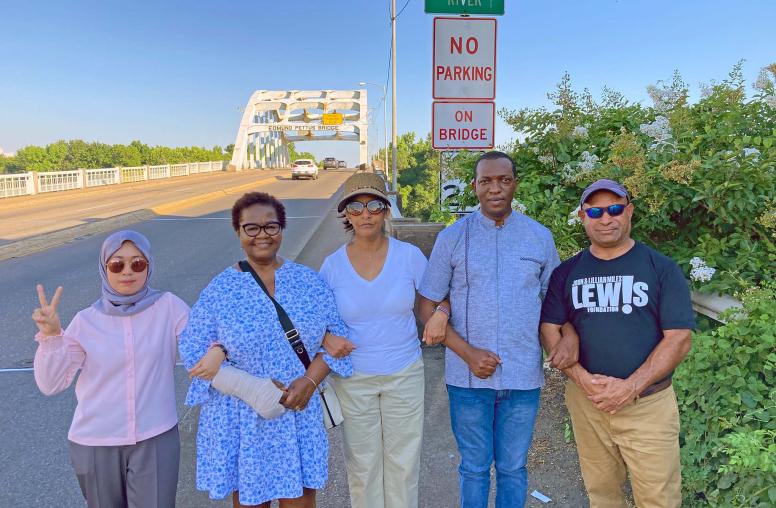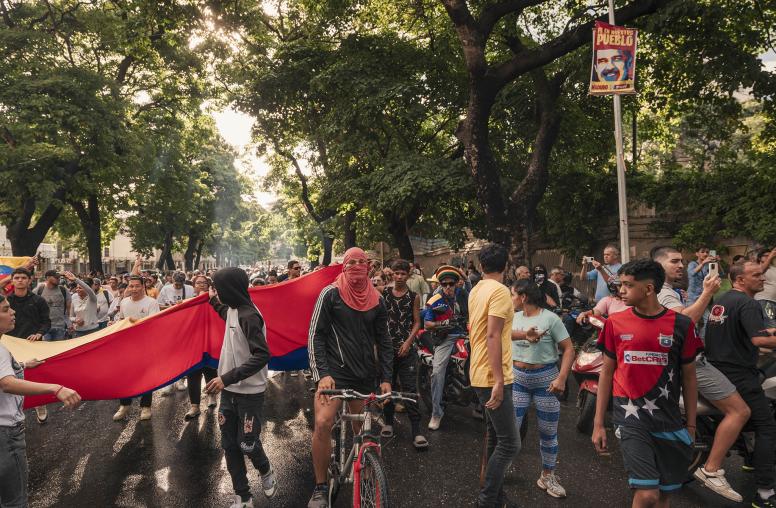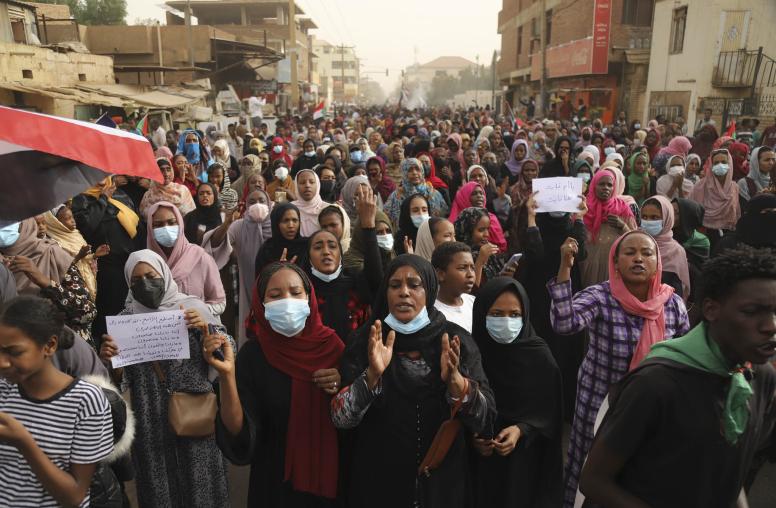Since Martin Luther King, Jr. Day last week, the nonviolent action team here at USIP has been reflecting on what Dr. King’s life and legacy teach us about the deep links between nonviolent action and peacebuilding. As we watch protesters in Hong Kong, Iraq, or Lebanon directly confront their governments, there may not seem to be much connection between people hitting the streets and building lasting peace. But for King, the connection was inevitable and inseparable, and practitioners of both disciplines have much to offer one another.

Among Dr. King’s best-known writings is the “Letter from a Birmingham Jail,” which makes the case for nonviolent direct action at a time when many sympathetic moderates wanted King to cease using these tactics and instead negotiate with local governments in the Jim Crow South. Dr. King’s response captures the essential connection between nonviolent action and more traditional peacebuilding tools like dialogue and negotiation:
“You may well ask: ‘Why direct action ... isn't negotiation a better path?’ You are quite right in calling for negotiation. Indeed, this is the very purpose of direct action … to create a situation so crisis packed that it will inevitably open the door to negotiation.”
Dr. King’s central point is that negotiation is often not possible or wise when there are power imbalances between parties in conflict, or when traditional institutional mechanisms—such as elections or the courts—are either blocked or rigged. The more powerful party likely has little interest in negotiation. And if there are negotiations, the more powerful party can structure the process to their own advantage. Negotiating amid a power imbalance will not only fail to resolve the underlying injustices in the system, it will ultimately lead to conflict recurrence.
In contrast, nonviolent action can shift power balances such that all parties are forced to come to the negotiating table on equal terms to address fundamental grievances and come to a just solution. This is one reason why countries that have gone through a nonviolent action campaign are less likely to experience civil war, and more likely to democratize. This power-shifting ability is what makes nonviolent action a core tool in the peacebuilding toolbox—it puts pressure on the powerful to make change even when they are benefiting from the status quo.
Beyond Taking to the Streets—Peacebuilding Tools for Nonviolent Movements
Peacebuilding tools—like dialogue—are key to building strong movements, as movements thrive on mass, diverse participation that extends beyond hard-core activists. Organizing constituencies like students, professionals, workers, and religious leaders requires dialogue, establishing shared interests, and resolving internal disputes. The Student Nonviolent Coordinating Committee relied heavily on dialogue tools to build the organizational infrastructure for the civil rights movement.
It should also be noted that the tools movements can deploy to achieve this power shift also go well beyond street protests. Dr. King’s entry into the civil rights movement was as a leader of the boycott of segregated buses in Montgomery, Alabama, a classic tool of economic noncooperation. Today, the pro-democracy movement in Hong Kong uses a mobile phone app to keep an updated, color-coded list of “yellow” pro-democracy businesses and “blue” pro-government businesses so that members of the movement can also fight for democracy with their wallets.
At the same time, once nonviolent action has leveled the playing field, parties in conflict will ultimately need to come together and work out their differences. Movements often struggle at this point, failing to pivot from the street to the negotiating table and to move beyond mass mobilization. Egyptian activists acknowledged that they were ill prepared to negotiate effectively with the military during transitional period after the ouster of Hosni Mubarak in 2011. In Sudan, the Forces of Freedom and Change, the main opposition alliance that led the protests that forced Omar Bashir from power in 2019 and is now part of the transitional authority, faces the challenge of transitioning from resistance to governance. In both cases, the tools of dialogue and negotiation are critical to wielding political power without alienating those who drove the nonviolent change in the first place.
Getting Activists and Peacebuilders on the Same Page
This close connection between nonviolent action and peacebuilding, as well as the challenges that both activists and peacebuilders can face in taking advantage of the tools of the other, underlies our team’s core training program: the “Synergizing Nonviolent Action and Peacebuilding” (SNAP) curriculum. SNAP helps nonviolent action activists to think like peacebuilders, and peacebuilders to think like activists, emphasizing the lessons that each set of methods can contribute to the other.
https://youtu.be/nU5H1uP6vvo
From Latin America to Africa to the Middle East, activists and peacebuilders have told us how the training has empowered them to push for positive change by shifting unjust power structures and resolving the root causes of conflict, not just the symptoms. In South Sudan, following a SNAP workshop, a group of over 50 civic groups and organizations came together to form the New Tribe, a movement dedicated to building bottom-up pressure for peace across tribal divisions using nonviolent means. Peacebuilders from Colombia have shared skills and experiences in local mediation to inform the movement-building work of civic leaders in Nicaragua who are fighting for democracy. In Afghanistan, where there is a nascent peace movement to end the civil war, activists and peacebuilders are strategizing ways to increase grassroots influence over the peace process.
Recent years have seen an explosion of movements trying to change unjust aspects of their political, social, or economic systems. Last year may have had the highest number of protest movements at any time in recent history, and 2020 may have even more. This makes it all the more crucial that we follow Dr. King’s call for closely linking nonviolent action and peacebuilding, and that these powerful tools are well-understood and deployed to bring about peace, democracy, and social justice.


